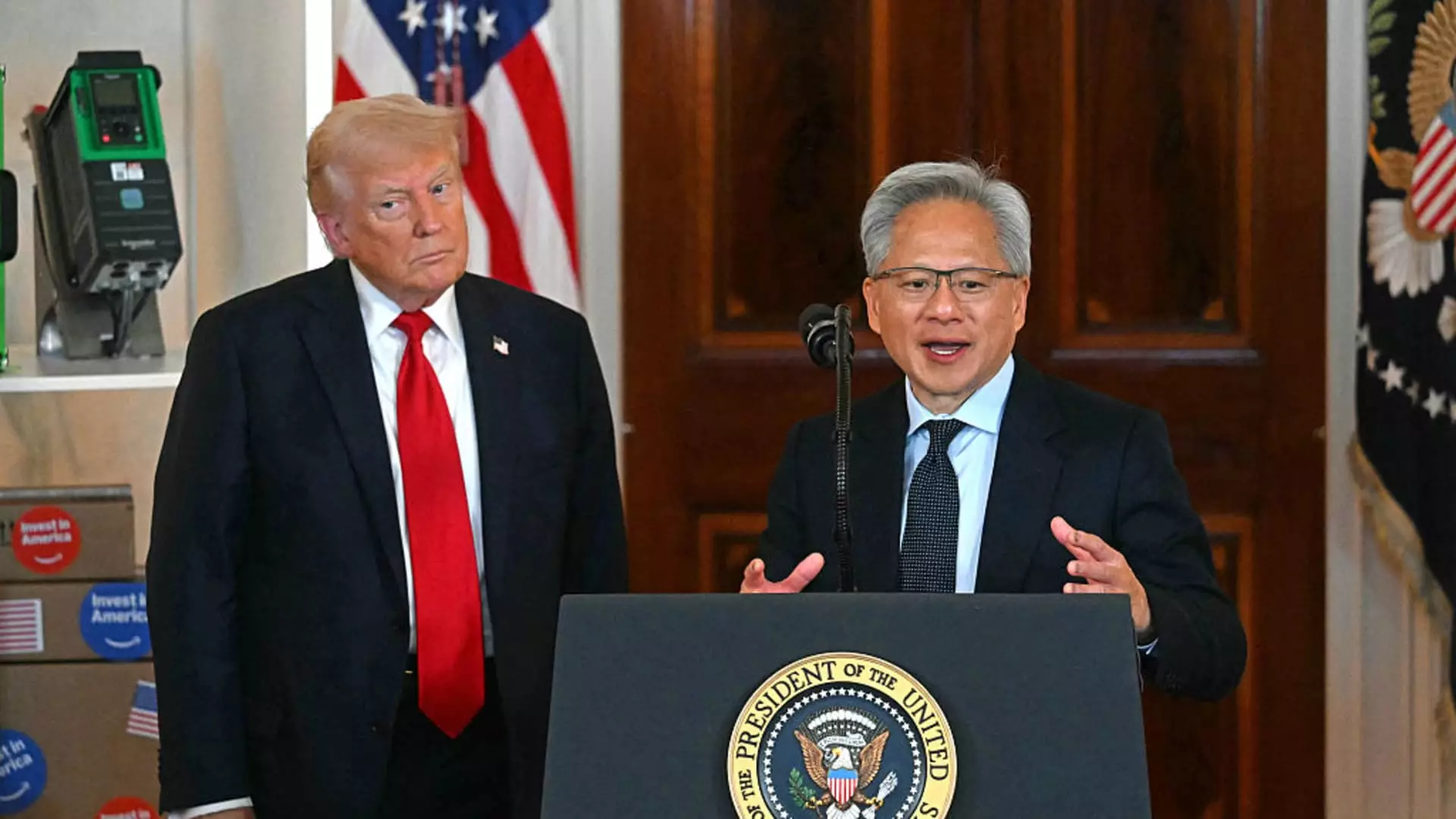In an era where technological supremacy defines global power, the debate surrounding the sale of AI semiconductor chips to China has ignited fierce partisan and strategic disputes. The decision by President Trump to permit Nvidia and AMD to sell critical AI chips—specifically Nvidia’s H20 and AMD’s MI308—to China in exchange for a 15% revenue share has sparked alarm among many U.S. policymakers. On one side, proponents argue that such sales catalyze innovation and enhance America’s economic competitiveness; on the other, critics stress that these transactions might inadvertently bolster China’s military capabilities and undermine national security.
This complex dilemma underscores a fundamental question: Should economic growth and technological leadership take precedence over security concerns? While enriching revenue streams and fostering international technological collaboration can seem beneficial in a globalized market, the danger lies in compromising the United States’ strategic advantage. When sensitive technology flows to a geopolitical rival, the risk extends beyond commercial interests—potentially enabling adversaries to develop advanced military systems or destabilize regional power balances.
Political Rifts and Security Concerns
Six Democratic senators have publicly challenged the administration’s approach, articulating fears that concessions made to China threaten America’s long-term security. In an open letter, Senators Chuck Schumer, Mark Warner, Jack Reed, Jeanne Shaheen, Christopher Coons, and Elizabeth Warren expressed that allowing Chinese access to cutting-edge AI chips allows Beijing to leapfrog technological boundaries, strengthening its military and strategic position. They argue that the U.S. historically safeguarded its dominance by denying adversaries access to revolutionary technologies—an advantage they believe is now compromised.
The senators’ alarms aren’t merely theoretical. They cite worries that AI chips like Nvidia’s H20 could be exploited by China’s military, potentially providing new capabilities that threaten stability and U.S. interests. Despite Nvidia’s insistence that their chips are civilian-focused and would not enhance military systems, the fear remains that technology’s dual-use nature inherently risks transfer to military applications in certain contexts. Moreover, the senators’ demand for transparency and reconsideration signals an urgent belief that the current approach endangers vital national security priorities.
The Administration’s Attempt at Justification and the Reality of Chinese Resistance
The Trump administration, however, dismisses these concerns, framing them as partisan alarmism and neglecting recent lapses when successive administrations freely authorized similar technology sales. White House spokesperson Kush Desai disparages the senators’ stance, labeling it “rich” given past oversight. He suggests that critics overlook America’s leadership and economic gains, implying that restrictions now could stifle innovation and damage competitiveness.
Nevertheless, the reality in China appears less welcoming. Reports indicate that Chinese authorities are discouraging their companies from purchasing U.S. chips, signaling an underlying strategic shift. A Bloomberg source notes that certain Chinese firms are being told to avoid buying these high-performance AI chips, with some companies already experiencing restrictions. This reaction suggests that even the Chinese government perceives the potential risks to their (and potentially U.S.’s) security interests, or they are strategically wary of becoming overly dependent on American technology.
The Broader Implications for U.S. Innovation and Global Power Dynamics
At its core, the debate reveals a deeper challenge: balancing the imperative of technological innovation with the imperative of national security. While the U.S. has historically maintained a lead through controlled exports and strict security measures, the current approach seems to prioritize economic benefits over strategic foresight. This shift risks setting a precedent—encouraging unchecked export liberalization that could weaken U.S. competitive edges in critical domains.
Furthermore, China’s strategic response underscores a vital point: technological decoupling may be inevitable if mutual distrust persists. The inability of the U.S. to effectively restrict access while simultaneously fostering innovation might create a fragile equilibrium—one where economic interests inadvertently empower adversaries. The question is whether this approach advances America’s interests or invites a future where the country’s technological monopoly erodes, culminating in diminished geopolitical influence.
While some advocates will champion the idea that closer technological engagement fosters global progress, the risks of irreversible breakthroughs in China’s military-industrial complex are too significant to ignore. The delicate balance of innovation, security, and geopolitics demands more than reactive policymaking; it calls for a strategic vision rooted in safeguarding America’s technological edge, not surrendering it in pursuit of short-term gains or misguided diplomacy.

